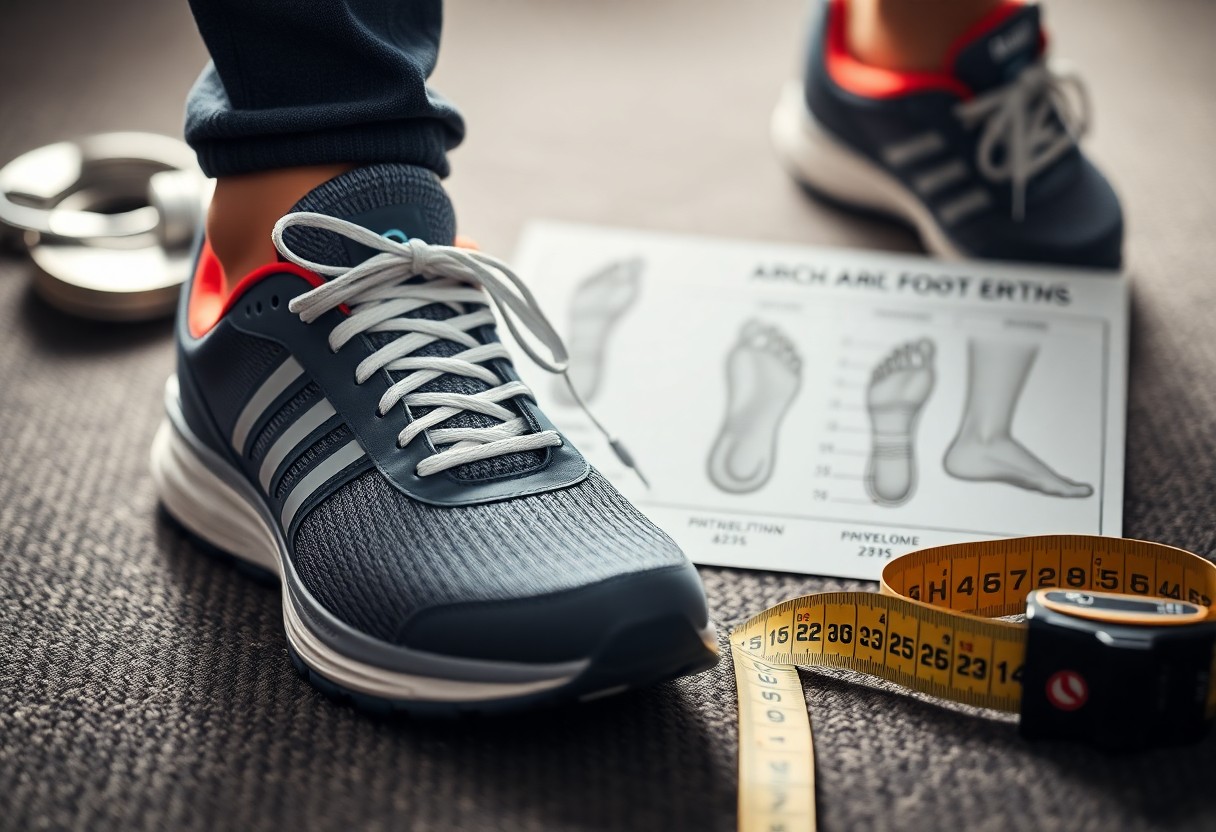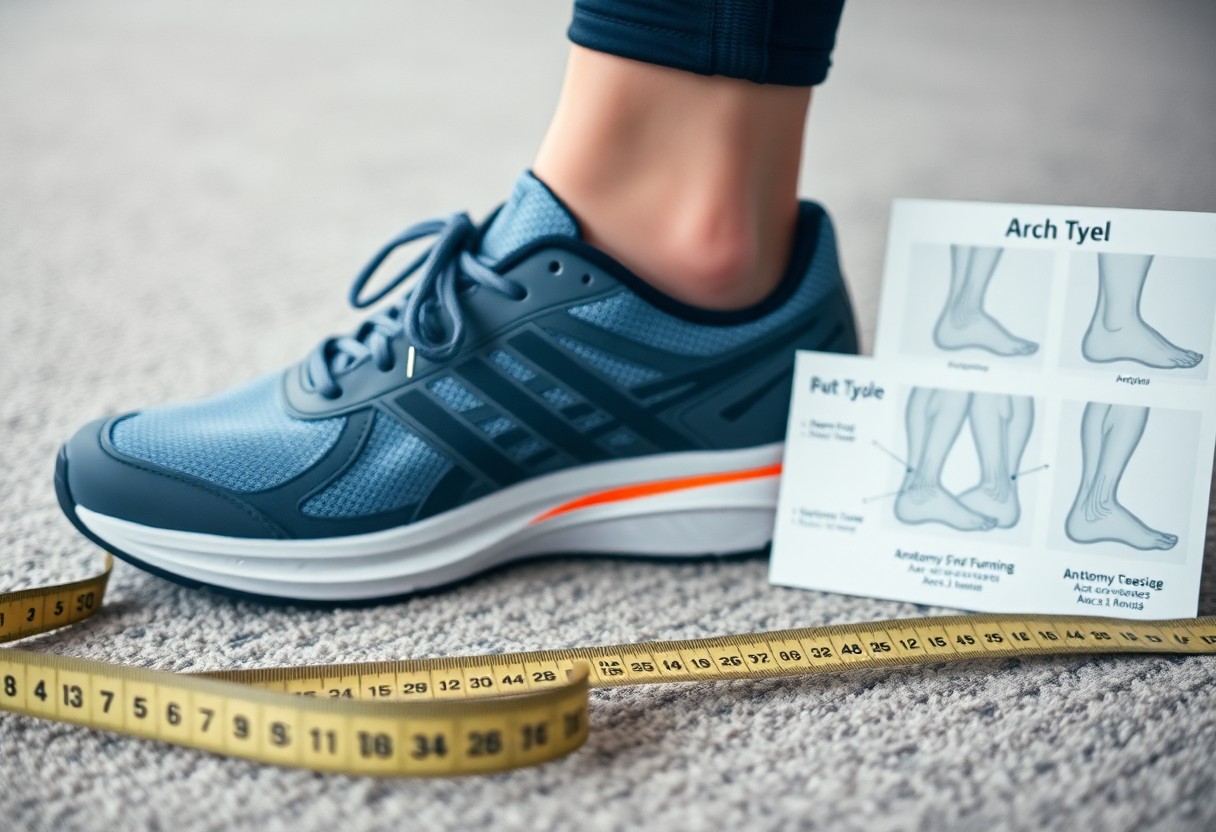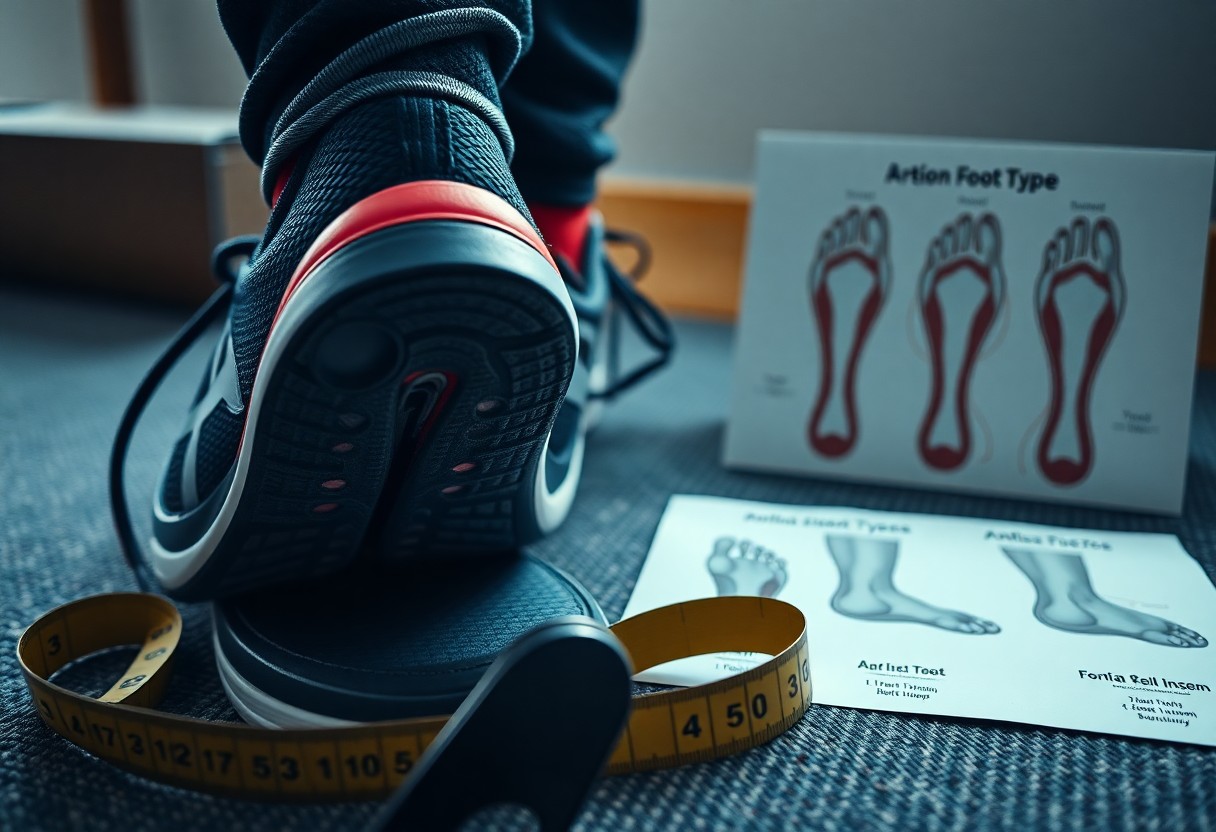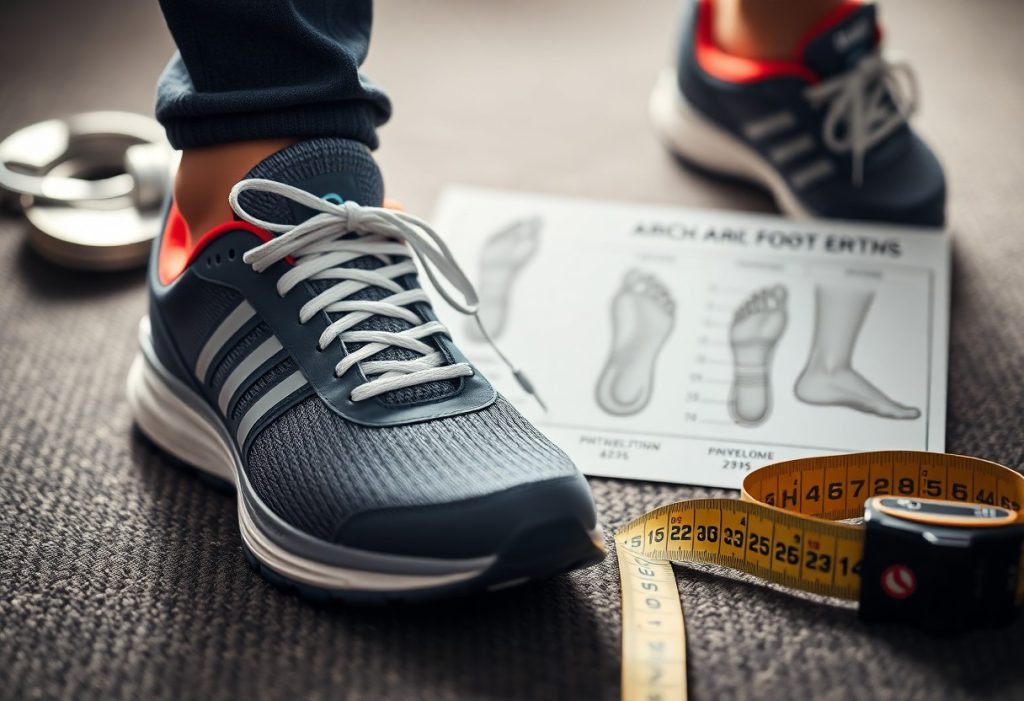Providing optimal foot support goes beyond simply adding arch support to your shoes. Surprisingly, most people do not need arch support in their footwear. In fact, scientific research indicates that avoiding arch support can actually strengthen your foot muscles. Over time, depending too much on artificial support may lead to muscle weakness. The human foot is designed with natural arches that flex and adjust to different surfaces, and restricting this natural movement with rigid supports could negatively impact your foot health in the long run. This detailed article will delve into the science of arch support, empowering you to make informed choices about your foot health.

Unpacking the Historical Development of Arch Support in Footwear
The natural support system of your feet has played a pivotal role in the evolution of footwear design throughout history. The concept of arch support gained significant momentum in the 1920s when Dr. William Scholl introduced commercial orthotics. Before this innovation, people relied on the innate strength and flexibility of their feet. Understanding this historical evolution helps illuminate how our perceptions and knowledge of foot health have transformed over time.
Tracing the Evolution of Footwear Practices Through the Ages
The journey of footwear evolution reveals that ancient civilizations primarily wore simple, flat sandals or often went barefoot. Such practices allowed for natural foot development and strength. The feet of our ancestors remained strong and adaptable without the need for artificial supports, as evidenced by studies on indigenous populations who continue to follow traditional footwear practices. This historical context highlights the crucial role of natural foot mechanics in sustaining foot health.
Examining Contemporary Standards in the Shoe Industry
By the mid-20th century, particularly in the 1950s, shoe manufacturers began to standardize built-in arch support as a common feature in footwear. Today, it is estimated that approximately 70% of modern shoes include structured arch support, a trend that has become entrenched in industry norms, despite the lack of comprehensive scientific evidence supporting its universal necessity. This evolution reflects changing consumer expectations and industry practices, prompting important questions regarding the potential consequences of such designs on foot health.
With arch support now ubiquitous in footwear, research published in the Journal of Foot and Ankle Research indicates that an over-reliance on arch support might lead to muscle weakness in the feet. As a result, many podiatrists now recommend incorporating periods of barefoot walking and choosing minimally supportive shoes to help maintain natural foot strength.

Diving Deeper into the Complex Structure of Foot Architecture
Your feet consist of 26 bones, 33 joints, and over 100 muscles, and they function most effectively when allowed to move without restrictions. The foot’s arch is a self-supporting structure that gains strength through regular activity and can weaken when subjected to artificial support. Research indicates that 75% of individuals who wear conventional shoes with arch support show reduced foot muscle activity, which can result in diminished natural foot strength over time.
Understanding the Wonders of Natural Foot Mechanics
The design of your foot is a remarkable feat of engineering, featuring an intricate system of self-support. Walking barefoot or in minimalist shoes allows your feet to experience a full range of motion, enabling your arches to flex and strengthen naturally. Studies have shown that individuals who frequently walk barefoot or choose minimal shoes develop stronger foot muscles and more stable arches compared to those reliant on supportive footwear. This underscores the importance of embracing natural movement for optimal foot health.
Fostering Muscle Development and Functionality
Limiting your foot’s natural movement can impede its development. Your foot muscles require consistent engagement through natural activities to retain their strength. Research published in Nature suggests that wearing shoes without arch support contributes to the growth of stronger intrinsic foot muscles. This connection emphasizes the critical role of natural movement in achieving optimal foot health.
Moreover, it’s essential to understand the implications of wearing shoes with built-in arch support. When these shoes are worn, the foot muscles may become less active, potentially leading to weakness over time. Studies have indicated that transitioning to minimalist footwear can result in a significant increase in foot muscle strength by as much as 60% within eight weeks. However, it's vital to approach this transition carefully, particularly if you have pre-existing foot conditions, to avoid the risk of injury.
Investigating Studies and Evidence Supporting Foot Health
If you’re keen to understand the scientific basis for arch support, numerous studies indicate that your feet can strengthen without artificial support. Various investigations have shown that natural foot movement promotes better muscle development and enhances arch stability, highlighting the essential role of biomechanics in maintaining foot health.
Reviewing Significant Scientific Studies on Arch Support
One of the most influential studies published in Nature demonstrates that individuals who wear minimal footwear develop foot muscles that are 50% stronger than those who wear traditional supportive shoes. This evidence bolsters the idea that regular movement and exercise enable your feet to support their arches naturally.
Comparative Analysis of Footwear Preferences Across Different Populations
Contrasting Traditional Shoe Users with Minimal Footwear Advocates
| Traditional Shoe Users | Minimal Shoe Users |
| Exhibit higher rates of flat feet | Demonstrate superior arch strength |
| Show weaker foot muscles | Exhibit stronger foot muscles |
A thorough analysis of diverse populations reveals notable differences in foot health. Your foot structure can adapt significantly based on the types of shoes you choose to wear, highlighting the importance of footwear selection.
Insights from Global Population Studies
| Developed Countries | Barefoot Communities |
| 20% flat foot occurrence | 3% flat foot occurrence |
| Higher reliance on arch support | Natural arch strength |

Examining the Paradox of Support in Footwear
Challenging commonly held beliefs, an overreliance on arch support in footwear can diminish your feet’s natural strength. The human foot is intricately designed with a complex array of muscles, tendons, and ligaments that work together to provide natural support. When artificial arch support takes over this function, the foot muscles may become less engaged, leading to gradual weakening.
Understanding the Cycle of Dependency on Arch Support
The continuous use of arch support creates a detrimental cycle. Feet can develop a dependency on external support, resulting in muscle atrophy. Research indicates that 70% of individuals who habitually use arch support experience increased discomfort when walking without their supportive shoes, illustrating the emergence of this dependency.
Exploring the Link Between Muscle Weakness and Arch Support
Wearing shoes with built-in arch support could weaken your intrinsic foot muscles by as much as 50%, as reported in findings from Nature. This weakening compromises your feet’s natural arch support system, potentially leading to conditions such as flat feet and other foot-related issues. It’s crucial to recognize that this muscle weakness may extend beyond your feet, as weakened foot muscles can negatively affect your overall posture and balance. Research shows that individuals who transition to minimal footwear often report a 60% increase in foot muscle strength within six months.
Exploring Natural Alternatives for Optimal Foot Health
For those wishing to transition away from conventional arch support, numerous natural options can enhance foot strength. These strategies focus on allowing your feet to function as they were naturally designed, promoting the development of stronger foot muscles and more stable arches through unencumbered movement.
Adopting Minimalist Footwear for Enhanced Natural Movement
Minimalist shoes, defined by their zero drop soles, wide toe boxes, and flexible materials, encourage natural foot movement. These designs allow your feet to move freely, helping to maintain proper foot mechanics and foster natural arch strength. Research has shown that the regular use of minimal footwear can boost foot muscle strength by up to 60% through daily activities.
Effective Strategies for Safely Transitioning to Minimal Footwear
When considering a switch to minimalist footwear, it’s essential to adopt a careful and gradual approach for your safety and comfort. Start by wearing minimal shoes for brief periods, gradually increasing the duration over several weeks. This method helps prevent overuse injuries as your feet adapt to their newfound freedom, facilitating a smoother transition.
A successful transition should ideally involve specific foot-strengthening exercises. Begin with 10-15 minutes per day in minimal shoes, adding an additional 5-10 minutes each week. Incorporate exercises like toe spreads and short barefoot walks on safe surfaces. This gradual strategy allows you to reduce the risk of common transition injuries while effectively building your natural arch strength.
Considering Medical Factors Impacting Foot Health
It is crucial to recognize that your foot health requires individualized attention. While natural foot movement is beneficial for muscle strength, certain medical conditions may necessitate specialized support. Factors such as foot structure, activity levels, and any pre-existing conditions will significantly influence your optimal footwear requirements.
Identifying Circumstances Where Arch Support May Be Beneficial
Contrary to widespread assumptions, arch support is not universally necessary. However, individuals with acute injuries, severe flat feet, or specific medical conditions may indeed find temporary or permanent arch support beneficial. Research suggests that only 10-20% of the population genuinely requires specialized arch support for medical reasons, emphasizing the importance of personalized assessments.
Guidelines for Comprehensive Professional Foot Health Assessments
To ensure informed decisions regarding your footwear, consulting a foot health professional is advisable. Comprehensive assessments should include gait analysis, foot structure evaluation, and a review of medical history. These components are essential for determining whether you require arch support or if transitioning to minimal footwear is a feasible option.
Support from a qualified professional can provide clarity and direction for your foot health journey. A thorough assessment should encompass measuring arch flexibility, evaluating muscle strength, and analyzing walking patterns. Your healthcare provider should also consider your daily activities and any past foot injuries to create an effective treatment plan tailored to your specific needs.
Evaluating the Impact of Footwear Choices on Foot Health
Ultimately, your choice of footwear plays a significant role in your overall foot health. You now understand that arch support is not crucial for the majority of individuals and may actually lead to weakened foot muscles over time. Your feet are inherently strong and flexible, functioning best when allowed to move as they were designed by nature. If you’re contemplating a transition to minimal footwear, beginning this process gradually will help your feet adapt effectively. The evidence strongly supports that allowing your feet to function without artificial support can lead to stronger muscles and improved foot health for most people. Always consider your individual needs and consult a foot health professional for specific concerns.
Answering Common Questions About Arch Support
Do healthy feet need arch support in shoes?
Most healthy feet do not require arch support in shoes. Studies show that natural foot strength develops more effectively without artificial support. The muscles and arches of the foot perform optimally when allowed to function naturally. This aligns with research on populations that frequently go barefoot or prefer minimal footwear, which demonstrate stronger foot muscles and fewer arch-related issues.
Can prolonged use of arch support weaken feet over time?
Yes, extended reliance on arch support can lead to weakened foot muscles. When artificial support performs the role of foot muscles, these muscles become less engaged, leading to gradual loss of strength. This creates a dependency cycle. Research published in Nature indicates that individuals who consistently wear conventional shoes with arch support often exhibit weaker foot muscles compared to those who choose minimal footwear.
Who truly needs arch support in their footwear?
Certain individuals with specific foot conditions, injuries, or medical issues may genuinely benefit from arch support. This includes those diagnosed with flat feet, specific foot injuries, or structural abnormalities. However, these cases should be evaluated by a foot health professional capable of creating an appropriate treatment plan. The goal should be to restore natural foot function wherever possible, rather than relying on permanent support.
The Article Arch Support: Essential Facts About Shoe Necessities Was Found On https://limitsofstrategy.com


This is such an intriguing perspective on foot support! It’s fascinating how our understanding of health and wellness evolves over time, especially regarding something as fundamental as our feet. I’ve noticed a trend lately where many individuals gravitate towards heavily cushioned footwear, often believing that more support is always better. Reading your point about the potential for artificial support to lead to muscle weakness really resonates with me, especially since I’ve experienced varying levels of comfort and pain with different types of shoes throughout my own life.
It’s really interesting how these trends in footwear reflect larger conversations about health and wellness. The emphasis on heavily cushioned shoes feels like part of a broader societal shift toward seeking immediate comfort and support, often at the expense of long-term strength and resilience. I’ve had my own journey with footwear as well—there were times when I gravitated towards shoes that felt almost like walking on clouds, but I eventually realized that while they provided temporary comfort, they didn’t really support my body the way it needed.
It’s great to hear about your journey with footwear. Your experience illustrates a fascinating tension that many of us face when it comes to balancing comfort with the right kind of support. The pull toward heavily cushioned shoes feels a bit like a microcosm of our wider societal approach to health and wellness. We live in an age where quick solutions and instant comfort often take precedence over long-term considerations.
You’ve highlighted an important point that many people are grappling with—how much support is just the right amount? It’s interesting to see this shift toward overly cushioned footwear, especially since what feels comfortable initially can sometimes mask deeper issues. Your experience echoes what many have found; different shoes can produce vastly different sensations and challenges.
I have to admit, I’ve always been convinced that arch supports were akin to the Holy Grail of footwear—after all, why wouldn’t we want to prop up our feet with a little extra cushioning? But this article sheds light on something I never considered: the idea that avoiding that crutch (pun intended) could actually create stronger foot muscles.